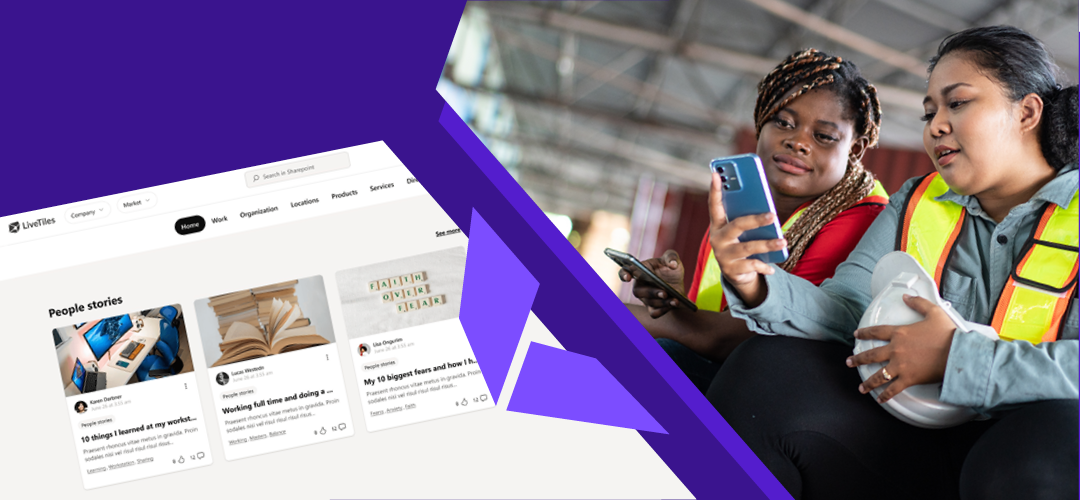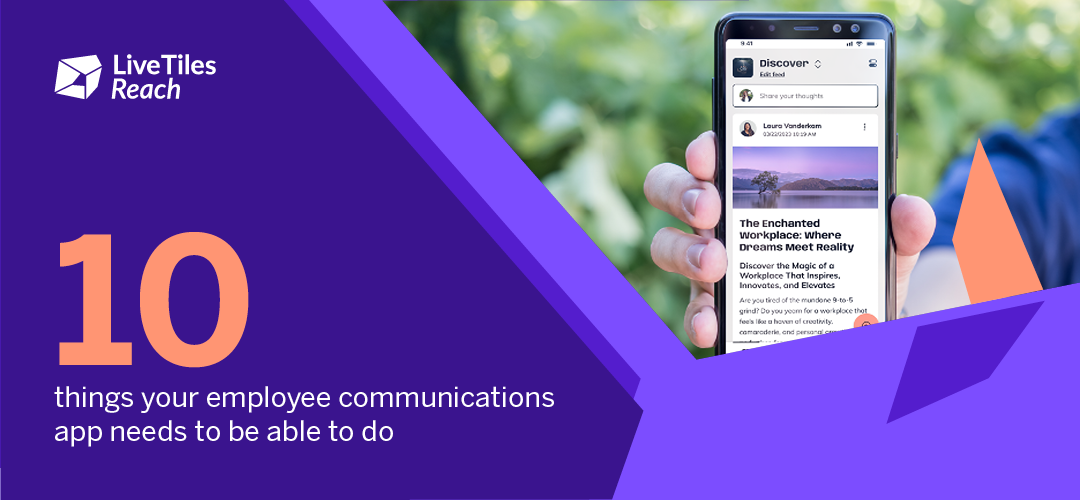This blog series will analyze the needs of the remote worker and the role employee self service profile information plays in supporting their communication, collaboration, and productivity. Check out the rest of the series and learn more onboarding remote employees and improving remote working.
It’s a cliché that in a business, your best asset is your people. But in the remote workplace, making the most of your people and properly supporting them poses some unique challenges—particularly in the long term.
If you want to keep your company culture alive, it’s important to proactively find ways to support your people, effectively onboard new staff, celebrate achievements and replace those everyday “watercooler chats”. The challenge is to recreate the secret sauce of your company culture in a digital way. Luckily, employee profiles can help.
Bringing people together with employee self service profiles
Whether your digital workplace is anchored in your intranet, SharePoint, or Microsoft Teams, employee profiles are essential. They remove the anonymity that can easily creep in when working remotely, giving extra information and a little flavor of the people you’re messaging each day. This is all an important part of maintaining your company culture when you’re separated by geography.
Let’s look at some of the most important features a good employee profile should include:
1. Profile photos
A good profile photo is the staple of an effective employee profile. Humans are naturally visual creatures and being able to see somebody’s face (even virtually) can make a huge difference to how you interact with them. It’s just human nature. It’s also particularly helpful for newer employees who never had the benefit of meeting their colleagues face to face before going remote.
Luckily, getting started with profile photos isn’t difficult – and once people start adding theirs into Microsoft 365, others will quickly follow. Promoting it team by team can be a good way to get the ball rolling. If you want some inspiration, check out how our client Markon did it.

2. Preferred titles
Everyone has preferences about the language they’d like people to use, the names they’d preferred to be called, and the way they want people to communicate with them. In a workplace, it’s important for people to respect these boundaries. Whether you’d prefer people call you “Ms” rather than “Miss”, “they” rather than “he” or “she”, or just “Tom” rather than “Thomas”, it’s important to facilitate an open and respectful dialogue about these things.
When everybody works together in person, it can be easier to discuss these things in quick chats and friendly comments. But discussing these preferences can be more difficult through email or Teams – because body language and context play such a big part in how we communicate. Having a space on your employee profiles where users can proactively discuss the language, they’re comfortable with others using can help keep everyone on the same page and smooth over any awkwardness.
3. Location details
Being able to understand where your colleagues are in the world is really important – and something we can easily take for granted. Principally, it helps ensure that people know which timezones their peers are working in, and therefore when they can expect them to reply to messages.
There’s no point asking for a task to be completed by the end of the day when that could mean vastly different times around the world. Do you mean 6pm in New York or New Zealand? One tool that really helps with this is the international meeting planner from timeanddate.com, which helps you navigate complex time zones and national holidays when you’re planning international remote meetings.
But also, having location details helps people understand when national holidays are going on around the world. It’s useful to know that Stacey from HR won’t be in on Friday because there’s a public holiday where she is. And sometimes it’s just really nice when your colleagues from around the world ask you how Thanksgiving went.
4. Language preferences
Thanks to technology, language is now less of a barrier to effective collaboration than ever before. And if you’ve got employees and offices around the world, there’s a good chance that there’ll be a vast number of different languages in your company. It can be helpful to communicate which languages you speak, and potentially whether there are any others you’re learning.
This will help people adjust their language to make others feel more included, avoiding words other people won’t understand. It also means that colleagues can practice their second or third languages during one-to-one conversations, which helps foster a feeling of togetherness and building bonds between people across the company.
5. Reporting lines and organizational charts
In any organization, it’s helpful to understand who reports to whom. The larger an organization is, the more important this can prove to be. For one, it means that people have vital context about who is responsible for certain tasks which is particularly useful if you regularly get emails and messages from people you’ve never spoken to before. It also helps a new employee get their head around workplace processes and systems much more efficiently.
Making reporting lines and organizational charts clearly visible helps to achieve all that. But it also it fulfils a valuable role in helping people to know where to reach out if they need managerial support. If, for example, you’re struggling to get in touch with a colleague, knowing who the manager is can be really helpful – particularly if you don’t know they’re away or on vacation. And if you have an HR query, it’s important for you to be able to discover the right person to help you within the employee self service portal.

The right employee employee self service information in the right place
Information is the key to a successful workplace and when working remotely it’s more important than ever to be as proactive in sharing it as possible. Whether it’s talking about your preferred nickname or just letting people know a little bit more about yourself, this information helps everyone work better.
With the LiveTiles Directory, you can automate the management of employee profiles. This means you don’t have to remind everyone individually to upload their photos and fill in their details, with the employee self service option. In fact, collecting the important, business-critical information about your employees, and making it readily updated and accessible can be a breeze. So why not support effective collaboration across your remote workplaces and get started today?
If you want to find out more about LiveTiles Directory and building your connected digital workplace, get in touch with the team today.
Share the blog post





